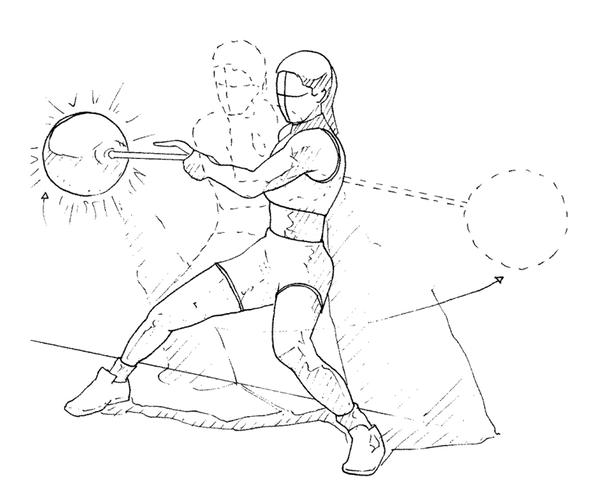Secrets of Tornado Training
by Paul Chek

Tornadoes are violently rotating columns of air capable of destroying towns, uprooting trees and causing havoc anywhere they go. They are nature’s most violent storm, but what makes them so devastating? It’s their ability to rotate!
Think about it… If a tornado didn’t rotate, it would only be a strong wind.
If we can learn anything from a tornado, it’s this: The stronger our rotational ability, the more powerful and stable we will be and improving rotational strength directly applies to everyone. In fact, everyone makes use of the twist Primal Pattern® during their daily lives, whether they’re a baseball player swinging a bat, a mother turning to pick up her child or a farm worker pitching a pumpkin into the back of a truck.
While there are numerous muscles recruited during trunk rotation, but the two primary muscles are the internal and external obliques.
Synergistically, they work together to rotate the trunk, stabilize the pelvis and side-bend the trunk (the external obliques also stabilize your rib cage). Because of the insertion into the thoracolumbar fascia, the internal and external obliques also provide stability to the lumbar spine.
Exercises for rotation
There are hundreds of exercises that will improve rotational strength, ranging from the beginner to highly advanced practitioner. I’ve included a few exercises here to give you an idea of what’s possible in the world of rotation.
Swiss ball Russian twist
Begin the exercise by lying supine on a Swiss ball with your shoulders in the middle of the ball. Put your hands together with your arms and hands outstretched toward the ceiling and place your tongue on the roof of your mouth just behind your front teeth. (If you’re uncertain where to place your tongue, swallow and pay attention to where your tongue goes. That’s the position.)
Gently draw your belly button in and begin rotating your torso left to right, making sure you don’t drop your hips.
Wood chop
 The wood chop is one of the most effective exercises for oblique conditioning. Begin by standing next to a cable column apparatus with a single-handle attachment placed high up the column.
The wood chop is one of the most effective exercises for oblique conditioning. Begin by standing next to a cable column apparatus with a single-handle attachment placed high up the column.
Reaching across your body, grab the handle with the hand furthest from the cable and then place your other hand over the first one. While keeping your arms straight with a slight bend in your elbows and knees, draw your belly button in and pull the cable diagonally across the body finishing when the handle is just outside your opposite foot.
Slowly return to the starting position and continue performing the movement for the desired number of repetitions.
Introducing the Tornado Ball
In the world of rotation, few things can compare with the Tornado Ball! Made of polyurethane rubber, this medicine-ball-on-a-rope will take anyone’s rotational training to a new level of intensity and effectiveness.
There are numerous exercise variations that are possible with a Tornado Ball that will aid in improving dynamic stability, agility, flexibility, coordination, strength, power and speed. I’ve included one such exercise below.
Tornado Ball wall chop
 In addition to being an incredible exercise for anyone wanting to improve rotational power, this exercise will help any athlete who swings a club, bat or stick.
In addition to being an incredible exercise for anyone wanting to improve rotational power, this exercise will help any athlete who swings a club, bat or stick.
Begin by standing a couple of feet from a sturdy wall. Bend your knees while drawing your belly button inward and make sure you have a good grip on the rope. Once you’re in your position, start swinging!
As you pick up speed and bounce the ball off the wall harder and harder, you will likely have to bend your knees even further to lower your center of gravity. If you don’t, the centripetal force of the ball will be enough to pull you forward away from the wall.
Because this is a ballistic exercise, you should only perform it for approximately 10 seconds. The goal is to target the explosive fast twitch fibers that fatigue quickly. The faster you swing the more challenging this exercise becomes.
You can also swing the Tornado Ball diagonally or perform a multi-directional chop, but these are highly advanced tweaks to this basic exercise and should only be used by people with lots of experience.
Tornadoes get their force, power and strength from their tremendous ability to rotate. By improving your rotational ability and strength, you’ll improve your athletic ability and most importantly your health as a more functional and fit person.
Love and chi,
Paul




